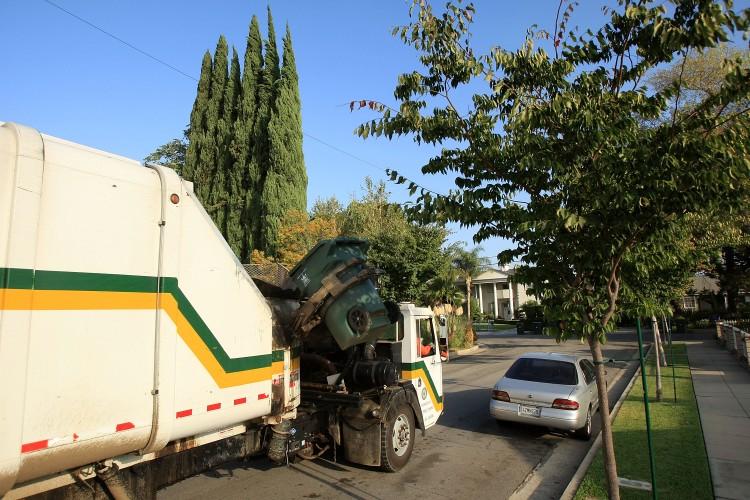Many U.S. state and municipal treasuries are either running low or are out of funds, given that 12.7 million people are still unemployed and thus don’t pay state income taxes.
Additionally, with a large housing inventory still sitting idle in the market, state treasuries no longer receive the real estate taxes they could count on in the past.
The exact number of houses, including condominiums, town houses, and apartment houses, that have been foreclosed and no longer bring in real estate taxes is not known; however, a 2010 estimate suggested that 7 million homes, called the shadow inventory, were on the market at that time.
The most disconcerting issue to be faced by future taxpayers is that state employee compensation packages, which include all kinds of pension benefits earned by an employee working for the state, accrue daily, but are not recorded.
“Current accounting rules have allowed states to ignore the total amount of the liabilities. … The effect is to create the illusion—for individuals and states—that they can continue to spend,” without having to worry about the true outstanding debt balance, according to a second study by the Institute for Truth in Accounting (IFTA) titled “The Financial State of the States,” released in mid-June.
States Deep in Debt Over Pension Payments
According to the IFTA, “46 states have dug financial holes for current and future taxpayers,” creating a large tax burden.
Using 2010 information, the IFTA study indicates that states have accumulated close to $1.2 trillion in liabilities, despite that 49 of the 50 U.S. states require a balanced budget, which would have eliminated future taxpayer burden.
A more recent estimate of public debt issued by Moody’s Corp. suggests that U.S. public pension debt has risen from $766 million to $2.2 trillion. According to the Calpensions website, Moody’s estimate is based on “a lower forecast of pension fund investment earnings.”
Fiscal year 2010 information was used in the IFTA report for comparison reasons because researchers require the same fiscal year for all participants in a study. States generally don’t release annual reports immediately after the year ends. For example, Hawaii state accountants took 469 days before they released their annual report. Illinois took 365 days, while Connecticut took 212 days.
Taxpayers’ Future Burden on the Table
“What now exists is a ’taxpayer’s burden' representing the amount each taxpayer would have to send to their state’s treasury to fill in their state’s financial hole,” according to the IFTA study.
Taxpayer burdens come to life when, for example, the state omits future employee retirement payments from its annual report. As it is done in a Ponzi scheme, the state transfers the payment to the future, that is, it will be paid by future taxes from future taxpayers when the payment comes due.
“Even applying the unrealistic assumptions used by states to calculate their unfunded retirement liabilities, IFTA researchers found the states have accumulated pension and OPEB [other post- employment benefits] liabilities totaling more than $1 trillion,” according to the IFTA study.
The total debt recorded on the balance sheet amounted to $111 billion, leaving a total of $909 billion unaccounted for in the annual statements.
“This lack of transparency is due to the reporting requirements established by the Governmental Accounting Standards Board (GASB),” the IFTA study states.
Since 1997, the GASB has recommended that states report a portion of the unfunded pension liabilities, but gave the states and municipalities a long time frame to become more transparent.
States have until after 2052 before all liabilities are to be reported in financial statements. Furthermore, although states must report the required amount in the income statement, it does not have to identify clearly if any of the amount is unfunded at that point in time. The IFTA researchers discovered that $422.7 billion in associated pension benefits were not reported in 2010 balance sheets.
“The lack of truth and transparency in state government budgeting and accounting makes it as realistically impossible for even the most sophisticated user of such reporting to independently determine and judge a public sector entity’s financial condition,” the IFTA study said.
Sunshine and Sinkhole States
The IFTA “has identified the top five ‘Sinkhole’ states, those that have the highest per taxpayer burdens,” according to the IFTA study.
The five states deepest in debt were Connecticut, New Jersey, Hawaii, Illinois, and Kentucky. The burden for individual taxpayers in Connecticut was $41,200 in 2009, which increased to $49,000 in 2010. New Jersey’s taxpayer burden was $35,800 in 2010, and among the five “sinkhole” states, Kentucky’s taxpayer burden was the lowest at $23,500.
The top five “sunshine” states, where no taxpayer burden had been accrued in 2010, were Alaska, Wyoming, North Dakota, Utah, and Nebraska. In Alaska, the future taxpayer didn’t have to help pay for the shortfall because each taxpayer had a surplus of $21,200, while in Wyoming, the surplus was $20,200. The lowest surpluses per taxpayer were in Utah ($2,600) and Nebraska ($2,400).
“Alaska catapulted to the top of the sunshine states by increasing the discount rate used by its retirees’ healthcare plans resulting in a $5.6 billion reduction in unfunded liabilities,” the IFTA study said.
Revamping Pension Rules
“GASB made a break and it has been referred to as a ‘divorce’ between funding and accounting for pension costs,” a June article on The Bond Buyer website reported.
The article refers to the changes announced in June by the GASB concerning accounting and financial reporting of public employee pensions by states and municipalities.
The rules provide a different way of calculating and accounting for any cost, debt, or unfunded liability associated with public pensions and associated benefits, and guidance regarding their inclusion in the balance sheet of financial statements.
The new rules are “designed to improve the decision-usefulness of reported pension information and to increase the transparency, consistency, and comparability of pension information across governments,” according to a June draft release by the GASB.
Alas, states or municipalities don’t have to use these standards in the future. However, the states and municipalities that refuse to use them will not get an unqualified opinion from auditors. This would put a dent into future borrowing activities in two ways: Lenders will not lend or the risk assessment will be so high that the cost of borrowing, that is, high interest rates, will make borrowing by the state or municipality unaffordable.
A second issue is that the GASB only addresses financial reporting and accounting issues, but not funding policies. Funding policies are either decided by statute or by a pension board (if delegated to the board).
Public employee unions and associations, as well as academia, interpreted the new rules in different ways and hold different understandings. The majority appears to believe that the new requirements concerning unfunded liabilities could result in destabilizing public pension plans. Some went even as far as suggesting that public pensions may become a thing of the past.
“Public pension plan executives worry that shifting the focus to liabilities will exacerbate fears about a plans’ financial conditions and lead to short-sighted funding changes,” according to a June article on the Pensions & Investments website.
The Epoch Times publishes in 35 countries and in 19 languages. Subscribe to our e-newsletter.






